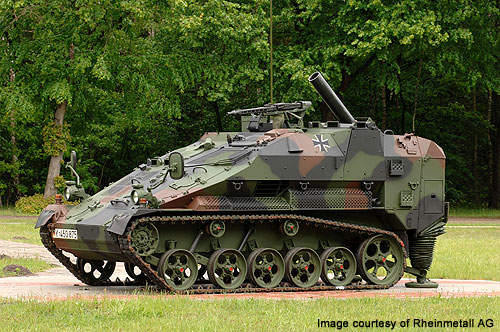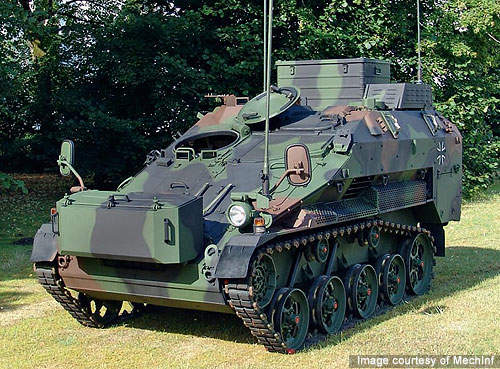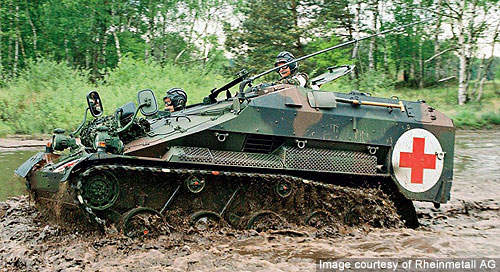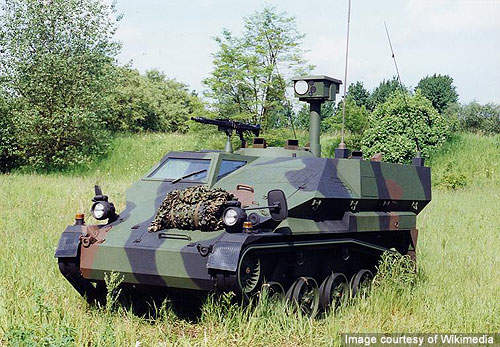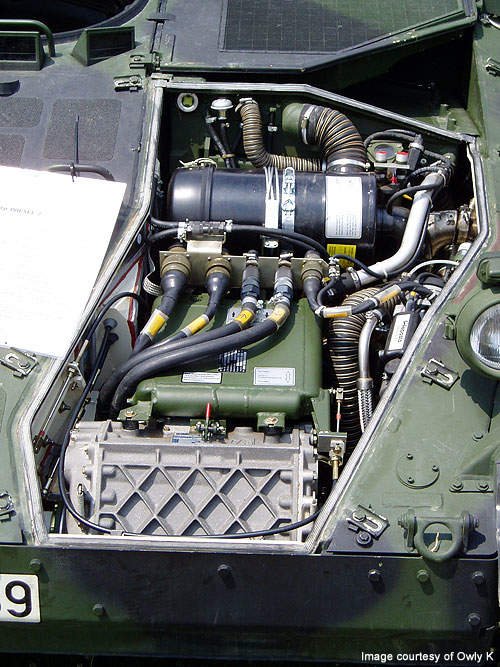The Wiesel 2 armoured vehicle family was developed by Rheinmetall Defence for the German Army (Bundeswehr). It was derived from the Wiesel 1 Armoured Weapons Carrier (AWC). The first Wiesel 2 light air-transportable armoured fighting vehicle was unveiled in June 1994.
It is a multi-purpose vehicle, which can be deployed in a variety of mission types such as reconnaissance, command and control, evacuation of wounded personnel, and weapon transportation.
Wiesel 2 armoured vehicle variants
The Wiesel 2 series includes an armoured personnel carrier (APC), a command post vehicle, joint fire support team (JFST), a field ambulance, air defence weapons carrier, a reconnaissance vehicle and 120mm mortar variants.
The APC can carry four fully equipped troops. It features two doors in the rear side for the entry and exit of crew members.
The command post vehicle is equipped with a roof mounted HARD radar system. The engineering / reconnaissance vehicle is fitted with combat engineer-specific equipment sets allowing it to perform demolition operations and scout minefields.
The mortar vehicle carries a 120mm mortar that fires a new type of specially developed Rheinmetall ammunition at a maximum range of 8km. The mortar can also fire conventional HE rounds, IR, smoke / obscurant and illumination rounds.
Orders and deliveries
The Bundeswehr ordered the first Wiesel 2 in 1995. The ambulance variant of the Wiesel 2 was delivered for field trials in November 1997.
It was certified as field-worthy in 1999 and twenty vehicles were manufactured at Rheinmetall’s Unterlüß plant during 2002-2003. An additional 13 vehicles were ordered at the end of 2006.
The Bundeswehr received a Wiesel 2 command post vehicle for field trials in 1999.
Wiesel 2 was also selected by the German Army as the platform for its new LeFlaSys Stinger air defence system.
Rheinmetall was awarded a €31m contract for the supply of 32 Wiesel 2 Mobile Command Post (MCP) variants, with an option for 16 more vehicles in mid-2004. Deliveries began in 2005 and concluded in 2007.
In June 2009, Rheinmetall was awarded a €54m contract to supply eight Wiesel 2 vehicles armed with 120mm mortar (lePzMrs) systems. The contract also includes an option for two command and control vehicles costing €7.5m. Deliveries are scheduled for 2011.
Wiesel 2 design and features
Wiesel 2 is a stretched and improved version of the Wiesel 1. It incorporates an extended hull and a more powerful engine. It can be easily distinguished from its predecessor by the additional road wheel it features on either side of its hull.
The vehicles are fully digitised and steering, acceleration, breaks and shifting gears can be operated without mechanical controls.
Observation and control
The vehicle is fitted with integrated observation equipment including a high-resolution daylight camera, a thermal imaging device and a forward observer (FO).
It can independently search targets and communicate with the command vehicle.
The crews of the company command vehicle, platoon vehicle and fire control vehicle jointly determine the action performed against enemy.
Armament
The vehicle is normally fitted with a roof mounted Krauss-Maffei Wegmann 7.62mm MG3 machine gun. Smoke grenade launchers are mounted on the front of the hull.
Self-protection
The chassis is made of steel armour and can withstand small arms ammunition of 5.56mm and 7.62mm. The vehicle offers better protection to the crew against ballistic threats and NBC (nuclear, biological and chemical) agents.
Engine
Wiesel 2 is powered by an Audi 1.9l four-cylinder turbocharged diesel engine coupled to a ZF LSG 300/4 automatic transmission. The engine generates a power output of 81kW.
The electronic control system onboard automatically tunes the engine and transmission output according to the vehicle’s weight.
Mobility
Wiesel 2 demonstrates all-terrain capabilities and manoeuvrability even in areas that are not generally accessible to large, heavy vehicles. The lower silhouette and lower ground pressure provide high stability on swampy and snow covered terrains.
The vehicle is air-transportable by the CH-53 and CH-47 helicopters.

